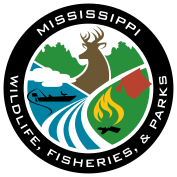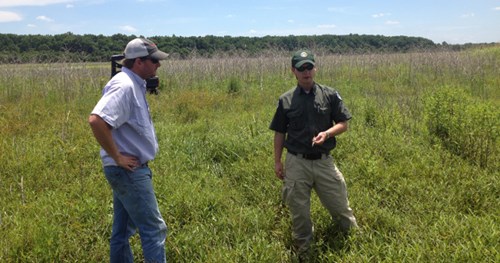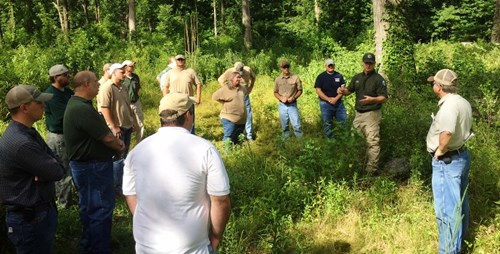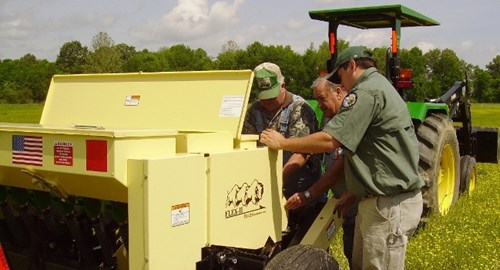
If you have questions about purchasing a license call 1-800-5GO-HUNT.
As a landowner or leaseholder, you play a critical role in the future of Mississippi's wildlife resources. The Private Lands Program has a variety of services and can help you meet your wildlife management goals, and potentially save you time and money. Our qualified Wildlife Biologists offer free on-site evaluations and recommendations for a variety of wildlife management needs.
"John Gruchy's team of private lands biologists are some of the most talented in the country hands down" - Dr. Mark McConnel on the Gamebird University Podcast
From people we've worked with:
"The information I received was very informative and I look forward to a continued dialog with a biologist for future recommendations."
"The biologist's advice and attention to detail was very good."
"The biologist was been extremely helpful and responsive. He has always been very helpful with questions and suggestions. The follow-up visit later was also very beneficial."
"The biologist did exactly what I needed, his advice was solid, and his responses were thoughtful and quick. Thank you!"
"The biologist was very helpful. He answered all of my follow-up questions as well."
"Great service. Super individual."
"My biologist provided lots of great information and plenty of referrals to other agencies."
"I was extremely pleased with the program's depth and breadth as evidenced by the detailed site visit and comprehensive follow up report/recommendations provided by the biologist. Kudos to MDWFP for implementing such a forward thinking program through it's staff of knowledgeable and experienced professionals."
"Biologist provided me with outstanding counsel as to how to better achieve a wildlife habitat following timber harvest."
"Very helpful in recommendations and in securing cost share funds"
"The biologist and his associate were very good."
"Great advice."
"The biologist was very knowledgeable and willing to answer any questions we had. Put to rest many myths and also confirmed our use of quality deer management practices. He also helped connect us with a forester with the state of Mississippi who we later met with and now are enrolled in prescribed burn program."
"I have had the pleasure of working with 2 of your outstanding program biologists and each time, I was very pleased with the expertise and thoroughness of the recommendations. I have been following them religiously!"
Private Lands Wildlife Biologists are trained to evaluate properties and work with landowners and leaseholders to help meet their wildlife management goals. Some examples of services the PLP provides include:
Private Lands Wildlife Biologists routinely conduct site visits with individual landowners or lease holders to evaluate their property, assess habitat conditions, and provide support in making management decisions.
It is often helpful to prepare for your site visit ahead of time so that you can be efficient and organized while in the field. Some important information to have prepared might include the following:
Following most site visits, Private Lands Wildlife Biologists will provide a brief written summary of what was discussed with some preliminary recommendations. In some instances, biologists and landowners may desire to develop a detailed management plan.

Private Lands Wildlife Biologists commonly conduct public presentations at wildlife and forestry field days and workshops as well as public events where wildlife management information is relevant. Additionally, Private Lands Wildlife Biologists communicate wildlife management information through articles, videos, podcasts, and more (see content here), often in collaboration with partners.

Private Lands Wildlife Biologists often provide technical guidance for specific habitat management practices, including calibration of no-till seed drills, conventional seeding equipment, pesticide sprayers, prescribed burning, tree and shrub planting, management of moist-soil vegetation, and establishment of supplemental food plantings.

In some instances, landowners and Private Lands Wildlife Biologists may decide it is appropriate to develop a habitat management plan for a specific property during a set period of time, usually five to ten years. Management plans often include a clearly defined list of goals and objectives, detailed site evaluation, and specific prescriptions for management practices with a timeline for completion and maps detailing arrangement of practices. Management plans are labor intensive and should only be perused in instances where the long-term goals and objectives of the property are completely clear and unlikely to change significantly over the course of the plan.
Where forest management is a key component, Private Lands Wildlife Biologists often recommend that landowners contact a Registered Forester, including a private forestry consultant or a Service Forester with the Mississippi Forestry Commission, for more information, especially where timber revenue is a consideration.
Although the MDWFP does not directly subsidize any habitat management practices on private lands, Private Lands Wildlife Biologists often liaise between landowners and multiple organizations to locate sources of funding to help with the costs of managing habitat.
Some common examples of cost-share programs include those provided by
USDA-Natural Resources Conservation Service (NRCS)
Forest Resources Development Program
Partners for Fish and Wildlife Program
For more information about cost share programs contact:
MDWFP Private Lands Program Email: privatelands@wfp.ms.gov
The Deer Management Assistance Program (DMAP) is a comprehensive deer management program consisting of data collection and cooperator education. Cooperators set their own deer management goals and collect biological information. In turn, wildlife biologists analyze the data and provide managers with the information necessary to make informed management decisions.
Learn more about the Deer Management Assistance Program.
The Spring Gobbler Hunter Survey (SGHS) was initiated in 1995 as a means of collecting long-term data on turkey activity and populations. The survey's success is dependent on a legion of hunters who are interested in assisting turkey management in Mississippi by voluntarily sharing their experiences afield. From their observations, biologists at the MDWFP gain valuable information on trends in gobbling activity, hunter effort, harvest rates, age structure, and sex ratios.
Learn more about the Spring Gobbler Hunter Survey
The MDWFP Waterfowl Program is dedicated to improving waterfowl habitat and hunting opportunities on public and private lands throughout Mississippi. We offer free technical guidance on private lands for landowners that are interested in help with wetland management and attracting waterfowl. We will provide recommendations on waterfowl habitat improvements, water control, plant identification and control, and even waterfowl hunting management.
Learn more about the Waterfowl Program
Despite the loss of habitat and declining quail populations, local populations can be increased with planned habitat management at proper scales. Abundant quail populations were once a byproduct of agriculture. Today, habitat management practices that produce the proper cover resources required by quail are essential to increase local populations.
For information about managing a pond on your property, see Pond Assistance.
Private Lands Program Email: privatelands@wfp.ms.gov